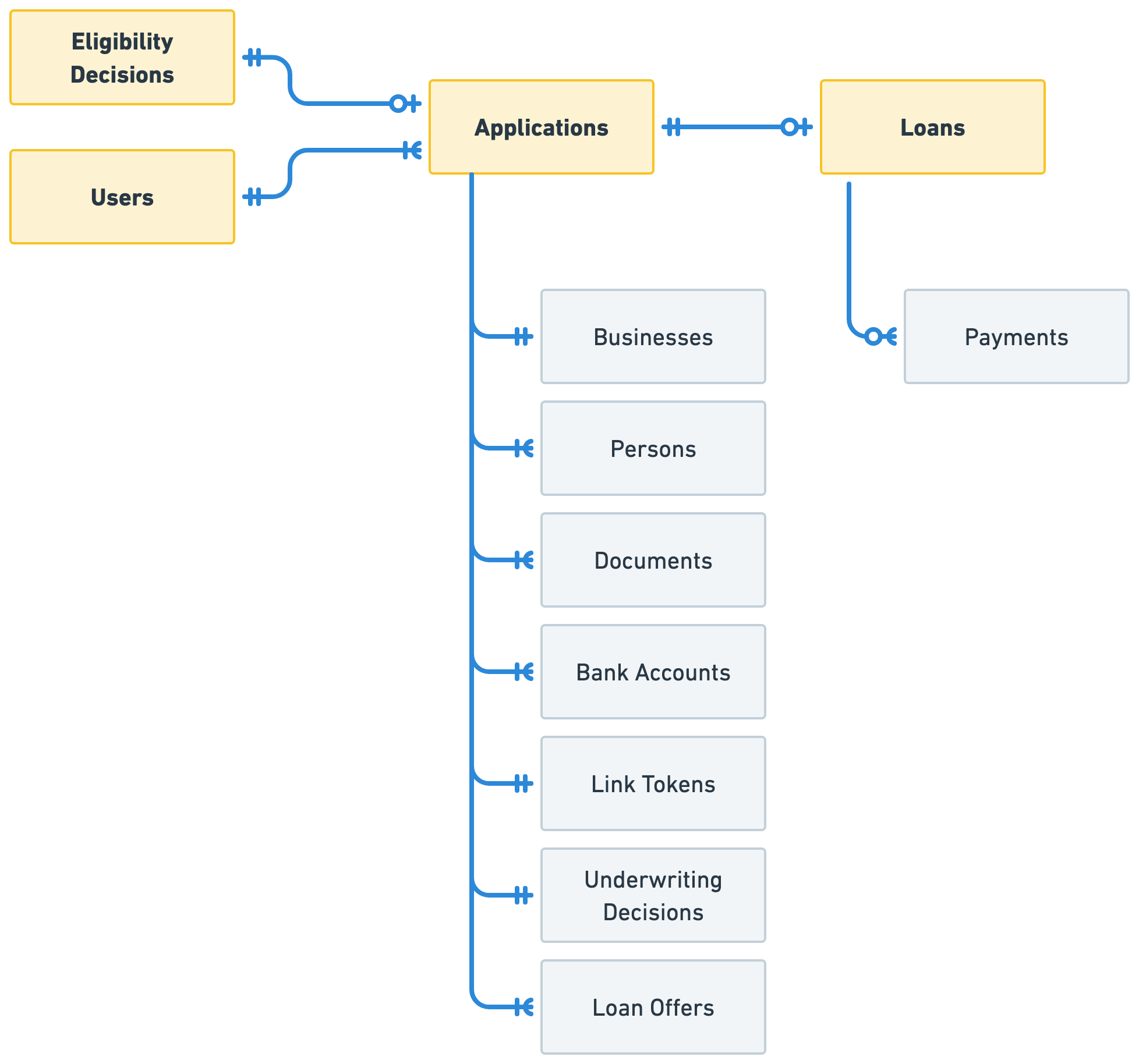Fundamental Entities
Intro
Before integrating with Prime's lending platform, it's essential to understand the fundamental entities that form the backbone of the system. Prime’s API is built around a hierarchy of interconnected components: Users represent the end-users applying for a loan on behalf of Borrowers (businesses), Applications track the loan request lifecycle, Documents manage required paperwork and agreements, Bank Account connections enable secure fund transfers and are used in the financial assessment (underwriting) of the application, and Loans represent the final credit product.
Each entity has specific requirements and workflows that—when properly understood—make the integration process smoother and more predictable. For example, a loan cannot be created without first having an approved Application, an Application cannot be submitted without first performing an Eligibility Decision. Understanding these relationships and dependencies will help build a more robust integration that handles edge cases appropriately and provides a better experience for the Borrower.
Entities
The fundamental entities in the Prime platform and API are organized into 2 categories:
Main Entities: represent the most important in the system and are also tightly coupled to the main endpoints the Partner system will interact with, namely:
Eligibility Decisions, Users, Applications, Loans
Secondary Entities: represent important objects that are managed through their parent entities (e.g. Documents can be retrieved, signed and interacted with only through the parent Application they are attached to). Secondary entities:
Businesses, Persons, Documents, Bank Accounts, Link Tokens, Underwriting Decisions, Loan Offers, Payments* (coming soon).
Relationships Diagram
The diagram below shows the relationship between the main entities and the secondary ones.

To know more about each entity, see the "Fundamentals : Key Entities" section on the left menu to navigate to the entity you want to understand more.
Note: The diagram above uses UML relationship designations (1-to-many, many-to-1, etc...), however this is not a data-model or database representation, its a logical representation between the entities to know about for a better navigation throughout the documentation.
Updated 7 months ago
